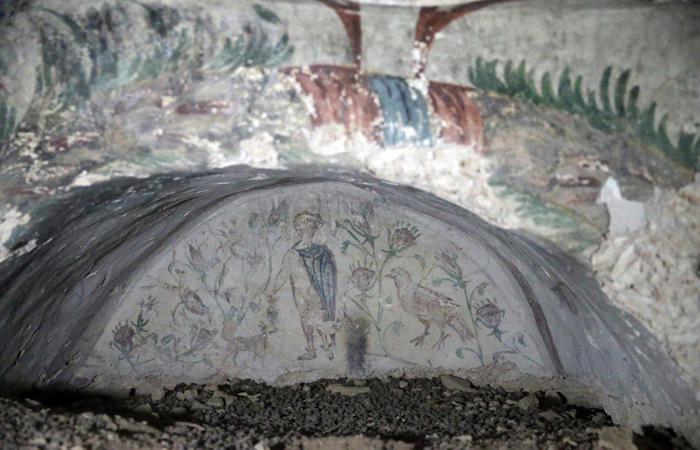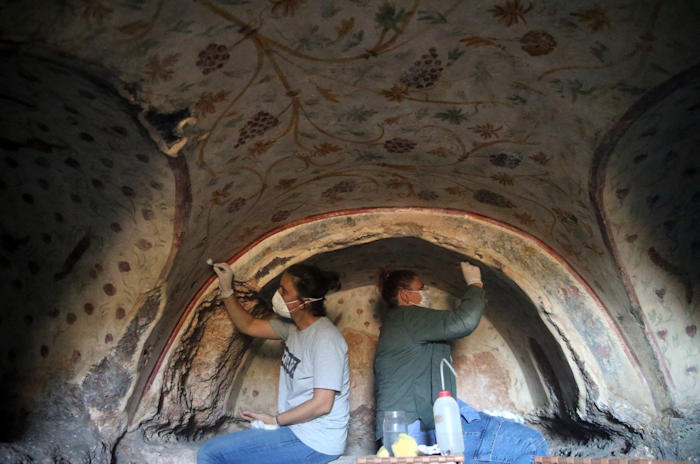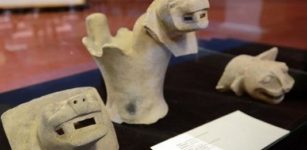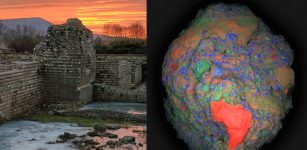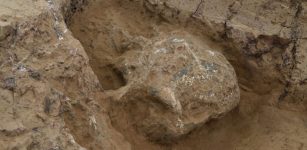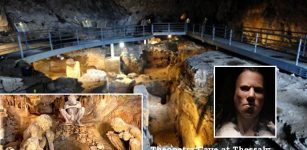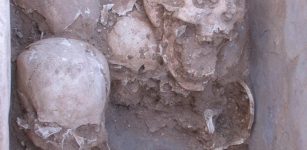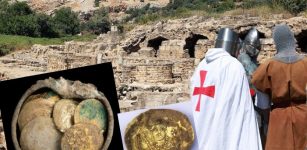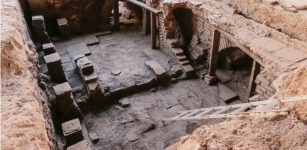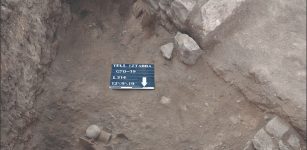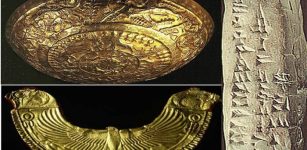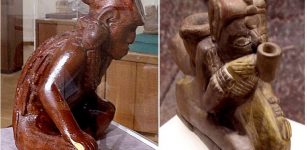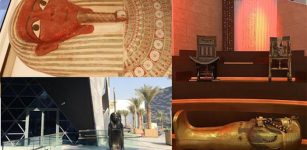Magnificent 1,800-Year-Old Rock Tombs Beautifully Decorated Discovered In The Ancient City Of Blaundus
Jan Bartek - AncientPages.com - Built on a vast plain surrounded by deep valleys and canyons the ancient city of Blandus was once a was a Roman episcopal city in Asia Minor. Located in Anatolia the city of Blandus was established by Roman Commander Blaundus as Alexander the Great was off to a campaign in Anatolia. Following Alexander the Great, the city was ruled by Romans and Byzantines.
Rock tombs in the ancient city of Blaundus, Uşak, western Turkey, Sept. 29, 2021. Credit: AA Photo
It is at this historical place that archaeologists have unearthed as many as 400 rock-cut tombs that are about 1,800-year-old. The magnificent tombs featuring multiple rooms, have walls that are beautifully decorated with special motifs of vine branches, bunches of grapes and flowers.
Speaking to Anadolu Agency (AA), excavation head Can said that Blaundos was established on a safeguarded hill.
“There is only one entrance to the city from the north, and the city is surrounded by a valley reaching a depth of 70 meters (300 feet) in some points. We determined rock-cut tombs in our recent works conducted in the steep sides of the valley. From the analysis of materials and bones we found in this area, we understand that these rock tombs were intensely used after the A.D. second century. We can say that they were used as family graves.”
As Daily Sabah reports, “Can's team believes that there are also a large number of graves underground in the ancient city. Noting that there are different types of rooms inside the rock tombs, Can continued: “There are arched sarcophagi carved into the bedrock in front of the walls of each room. Apart from these, places that are thought to be used for funeral ceremonies were also found inside the rock tombs. The main door of the tombs was closed with a marble door and reopened during burial or ceremony times in the past.”
Emphasizing that their priority is the preservation of the tombs, Can said that they also prepare projects for the promotion and opening of these structures. Stating that there will be a walking path starting from the city entrance and going around these tombs, Can said: "Within this project, plans have been made to illuminate the area of the tombs. We are planning to make the entire necropolis visitable in the future.
See also: More Archaeology News
Blaundus was built on the top of a hill overlooking Grand Ulubey Canyon, which has strategic importance for the Lydia-Phrygia border. Although the city was founded in the Hellenistic era, due to earthquakes that caused widespread damage, the city was rebuilt and fashioned into one of the more significant Roman-era urban centers in the region.
There are many public and religious buildings, such as temples, a theater, a stadium, a gymnasium and a basilica. The structure of an 8-kilometer (5-mile) aqueduct also remains that served to bring fresh water to the city.
Written by Jan Bartek - AncientPages.com Staff Writer

